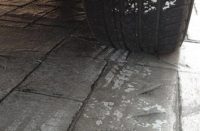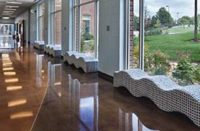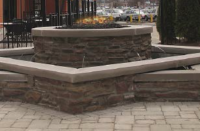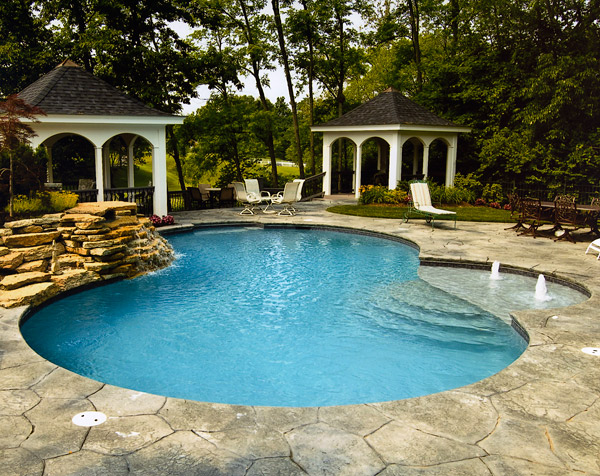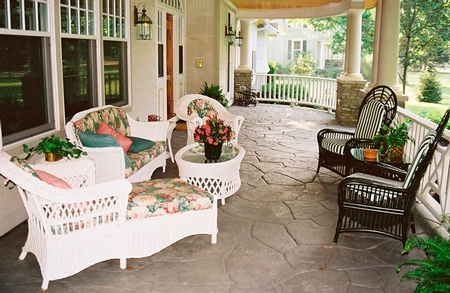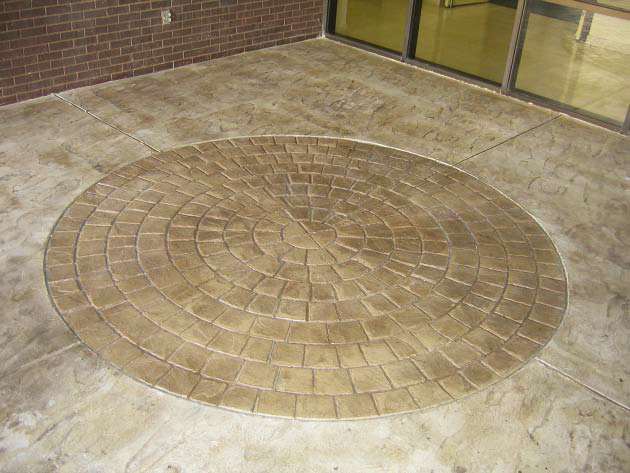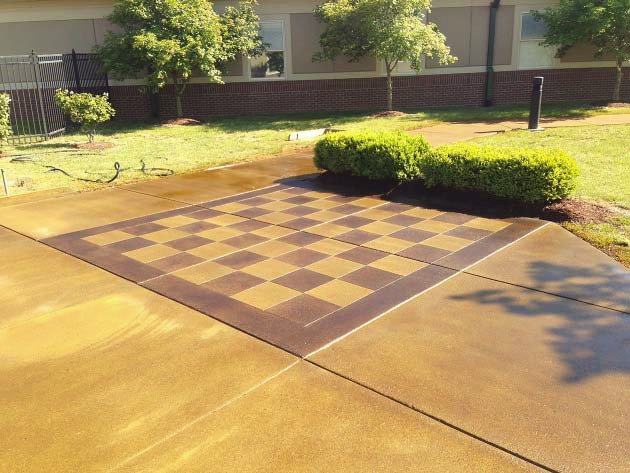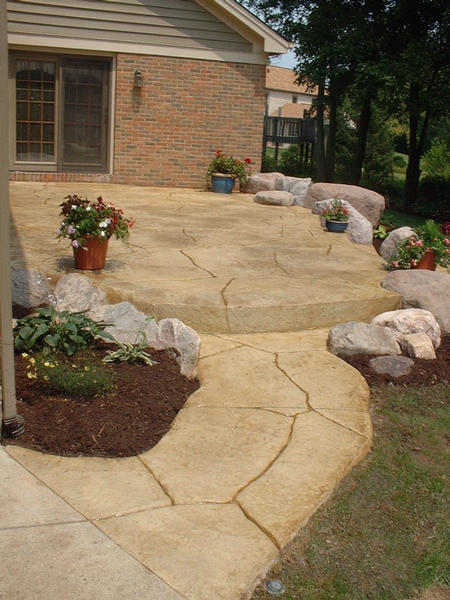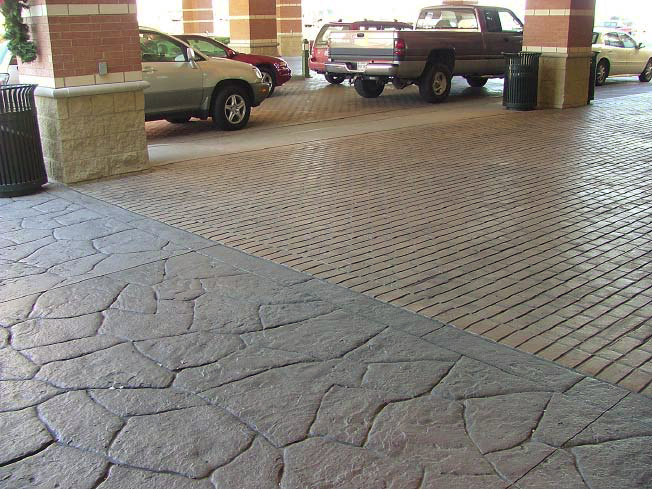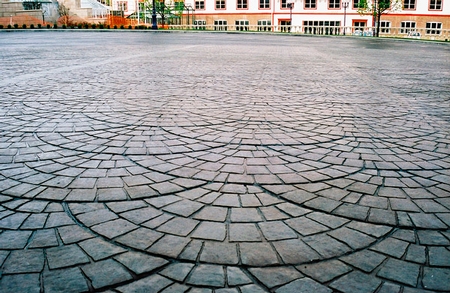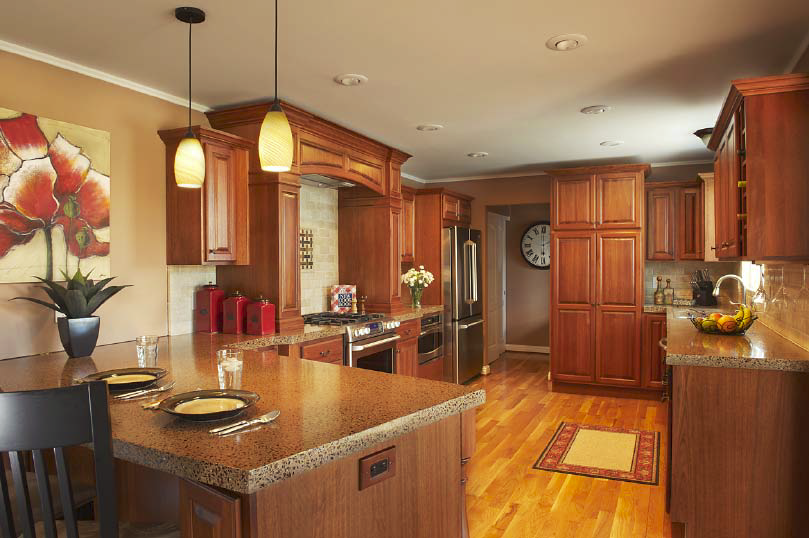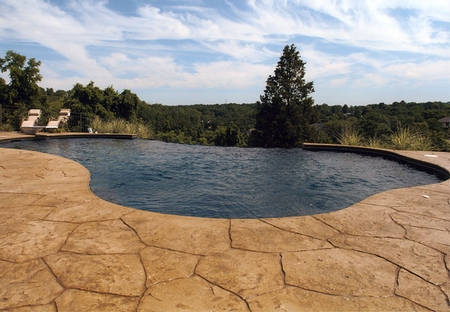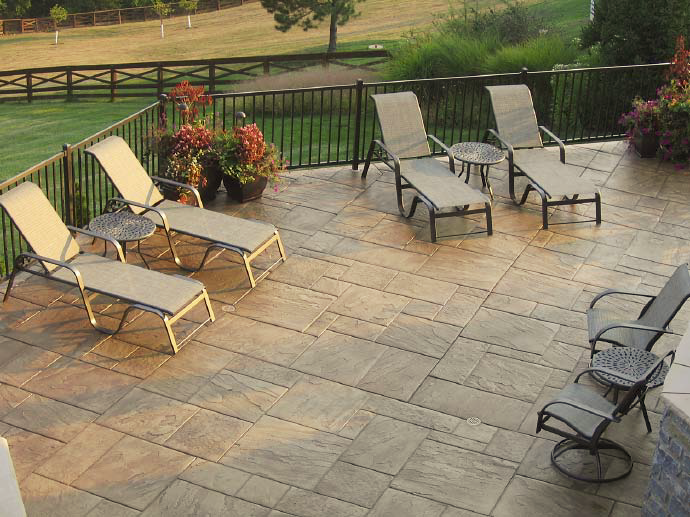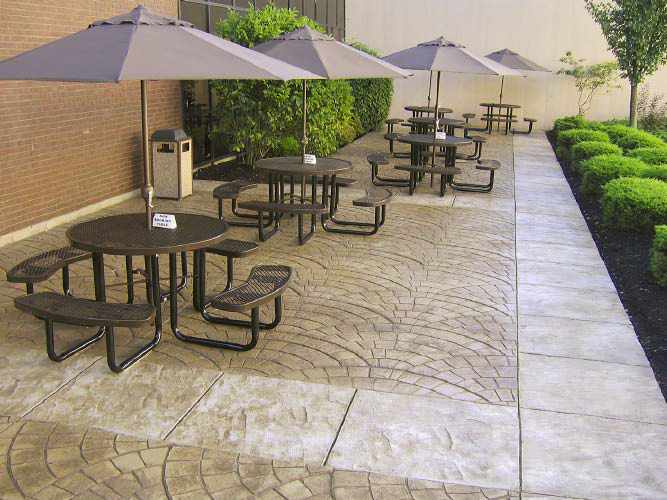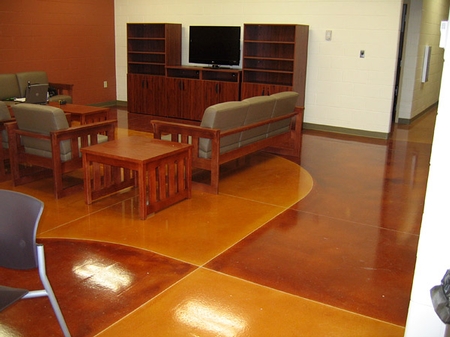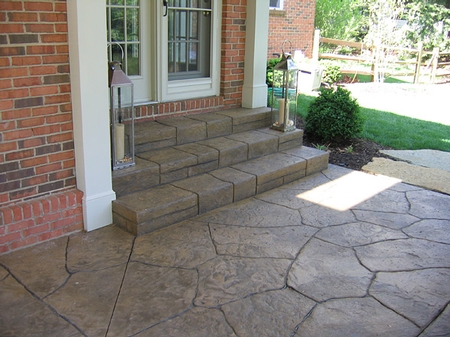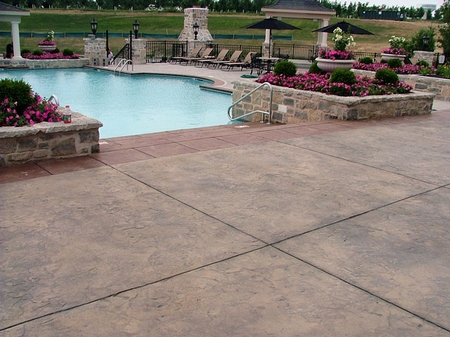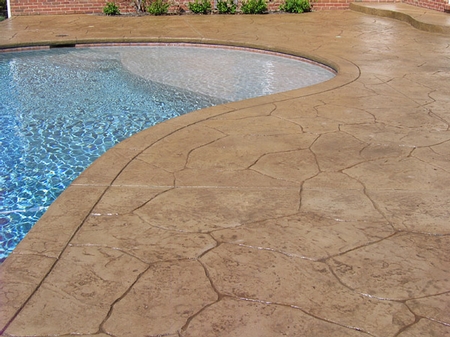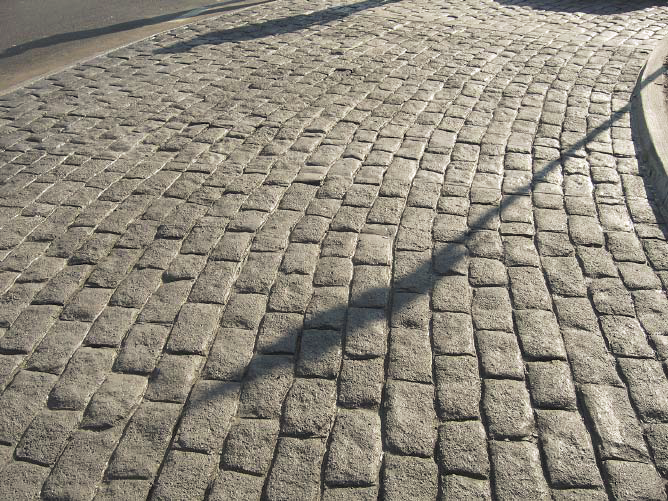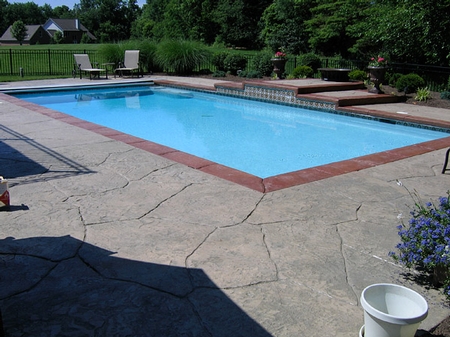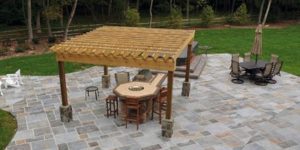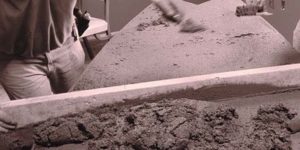Paul Schneider is one of the lucky people in this world whose hobby and occupation are one and the same: decorative concrete. “Most people don’t think of a hobby as something you make money off of,” he says. But he does it.
“Decorative concrete is fun and exciting. I love being challenged by the customer to create a look from something that starts with a thought,” he says.
As vice president of Patterned Concrete of Cincinnati, a small company he formed in April 1994 as a licensee of Patterned Concrete Industries, Schneider, 55, has designed and installed decorative concrete for a wide scope of commercial and residential projects — everything from municipal buildings, theme parks, casinos and shopping centers to restaurants, pool decks and patios.
Patterned Concrete’s work largely involves staining and stamping, with a consistent 50-50 ratio of commercial to residential. Most of his work is done within a 100-mile radius of Cincinnati, in cities such as Indianapolis, Columbus, Ohio, and Lexington, Kentucky.
Learning the ropes
During his college years in the late ’70s, Schneider worked as a laborer for Baker Concrete Construction, an Ohio-based contractor with a national presence, and his interest in concrete construction steadily grew. Although he considered switching majors from accounting to construction management, he listened to his advisers and took construction management electives instead, as his schedule permitted. Schneider graduated on time from the University of Cincinnati with a bachelor’s degree in accounting. He had planned to return and work on a degree in construction management, but that never materialized.
“The (full-time) job I accepted with Baker kept me working out of town for the next six years, so pursuing another degree part-time wasn’t an option. I started as a laborer and worked my way up to an operations manager running large projects in places such as Atlanta, Washington, D.C., and Fort Drum, New York,” recalls Schneider.
One of his more memorable Baker projects, he says, was placing and finishing the concrete at the Georgia World Congress Center, the big convention center in downtown Atlanta. “Here I was, 23 years old and responsible for a quarter million yards of concrete and 1.5 million square feet of floor,” he says.
Schneider was instrumental in helping to create Baker’s decorative concrete program in 1988. When he left to start Patterned Concrete of Cincinnati a few years later, Baker signed on as one of his clients.
He considers the company’s owner, Dan Baker, one of his two most influential mentors. “He taught me about the concrete construction business and how to treat a customer,” Schneider says.
His other mentor is Mike Archambault, who was one of the owners of Patterned Concrete Industries in 1988, when Schneider became involved with stamped concrete. “Mike was a star before his time,” Schneider says. Archambault taught him that if you’re not willing to put it in your backyard, you shouldn’t sell it to the customer, and that above all, you should treat people with respect.
Supporting the industry
A big proponent of paying it forward, Schneider belongs to a variety of professional organizations. He’s been a member of the American Society of Concrete Contractors for 10 years and currently serves as the director of its Decorative Concrete Council. Last year, he says, the all-volunteer council published five different white papers that addressed issues concerning sealers. “I was part of that particular task force that compiled a glossary, characteristic chart, installation checklist, and application and maintenance guides. It was about a three-year process.”
The DCC is an organization that focuses on helping decorative concrete contractors advance through education and networking while staying abreast of the latest trends and products. “We try to be a full resource offering decorative concrete contractors our expertise and reputation,” Schneider says. He points out there is more to this industry than just building things with concrete, which is where most contractors’ expertise lies. There’s also the business side, where many tend to be weaker.
The ASCC can be a big help there, he says. The group offers position statements on problems and practices to help contractors with negotiations and proposal submittals, as well as providing training in safety, marketing and business administration. It hosts an email forum, where members can post questions, and Membership Information Exchange (MIX for short) groups where noncompeting peers meet twice a year. “The ASCC can help you become a better contractor all the way around,” Schneider says. “If you ask for help, members will provide the resources.”
Each year, the council also installs a community service project somewhere in the country. Materials are donated, and members volunteer their time and pay their own way. Last year, he says, they chose the Western Kentucky Veterans Center in Hanson, where he and his team stained 5,000 square feet of existing concrete to tone down its brightness. They also created two focal point areas — one looks like a giant checkerboard that’s used for occupational therapy exercises and games, while the other features a compass point and various military emblems to create a gathering place and to help foster conversation.
“That project was life-changing for me,” Schneider says. “It gave me a chance to give back to the veterans who have given us so many things in our lives. It was quite an honor to interact with those men who in turn were so appreciative of us helping them out.”
Besides his ASCC involvement, Schneider is a member of the Home Builders Association of Greater Cincinnati and has served on the associate board. He also belongs to Allied Construction Industries, a nonprofit trade association for commercial contractors in greater Cincinnati, as well as the local chamber of commerce.
It costs money to belong to all these organizations, but to Schneider, it’s well worth the money spent. If you’re active and take advantage of what these groups have to offer, he says, “you’ll reap more rewards than what you put into it.”
Another endeavor that has paid off for him involves the World of Concrete. For the past two years, Schneider has taught a hands-on stamped concrete training class, which he says has opened doors for him as a consultant.
Stamp of approval
Schneider’s favorite aspect of his decorative concrete work is when a client gives him artistic freedom with a project from planning to final product, rather than dictating exactly what needs to be done.
His showroom, which consists of 800 square feet inside and 3,000 square feet outside, displays more than 20 stamp patterns in an array of 24 colors. This allows his customers to see the real color instead of just looking at a color chart. He exclusively uses Patterned Concrete Industries stamps, which he says are the best in the business.
“I have some stamps that are 26 years old and have 1/3 million square feet under them,” he says. “And they still leave the same impression they did when they were brand new.”
For those just breaking into the business, he offers advice. “This is your chosen profession. Treat it with respect because a lot of good things can come out of it. If you do not know the answers, ask questions and get training from reputable sources. Get involved and give back to the industry that is going to give you a good life. If everybody helps one another, we’ll all make the industry better as a whole.”
www.patternedconcrete.us
